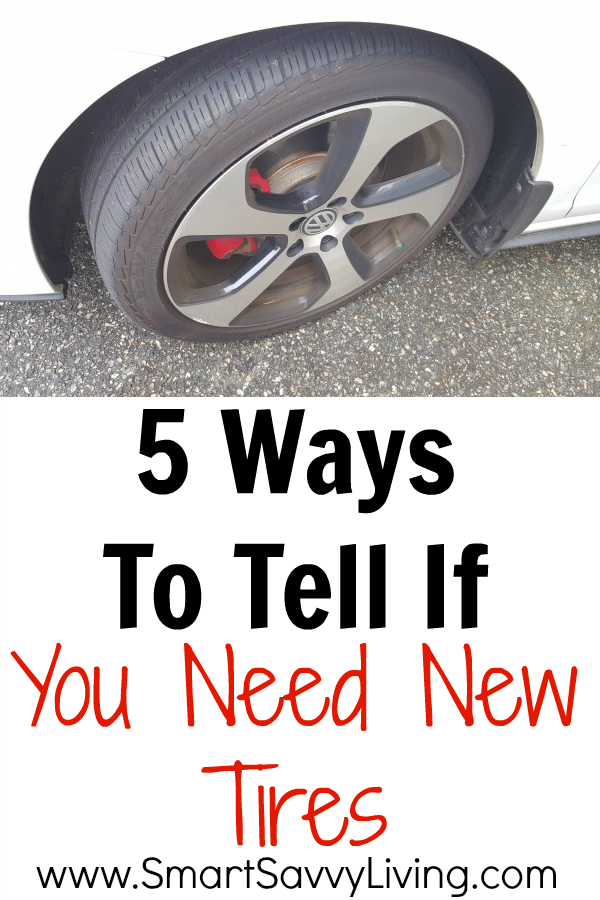Tire tread naturally wears down over time. No surprise there. But what happens when your tires wear down too much and become bald? And just how bald is “bald?” Bald is the point at which it's essential to replace your tires — for your safety and others on the road. Learn the signs of bald tires and what can happen if you drive with bald tires.
Just as a person is bald if they have little to no hair, a tire is bald if it has little to no tread. With each trip you take in your vehicle, the tread of your tires wears down. If you drive too long with worn-down tread, your tires can become bald.
What qualifies as a bald tire? A tire with at least one groove whose tread depth reaches 2/32 of an inch is technically considered bald. A 2014 survey by the Rubber Manufacturers Association found 12% of U.S. motorists reported at least one of their tires was bald.
It’s not hard to spot a bald tire. Many new tires come with what are known as indicator bars, also called parallel wear bars. If the tread is flush with the wear bars, you’ve got a bald tire. Even without those bars, you can tell whether the tread has worn down a lot simply by inspecting the tire.
You can check the depth of tire tread with a tread depth gauge. Tread depth gauges are available at auto parts stores and online.
You also can measure the tread depth by sticking an upside-down penny into a tread groove. If you can see all of Abraham Lincoln’s head, you should replace the tire. When you do this test, you might notice that some tread sections are deeper than 2/32nds of an inch. However, if any part of a tire fails the penny test, the tire should be replaced.
For road-safety best practices, Firestone Complete Auto Care recommends replacing your tires before they wear this much — around 4/32nds of an inch. Or, if you want to think of it in “penny test” terms, substitute the penny for a quarter, and stick it heads-down into your tires’ grooves.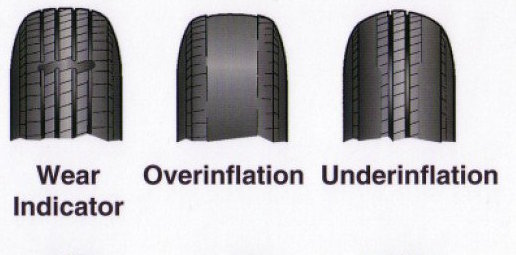 If Washington’s head is visible at any point, you should consider getting new tires.
If Washington’s head is visible at any point, you should consider getting new tires.
Several factors can contribute to tires becoming bald:
A tire that lacks the proper amount of air is underinflated, while a tire that’s carrying a bigger load of air than it’s supposed to is over-inflated. Both of these conditions can cause stress on a tire, leading to increased treadwear.
An unbalanced tire means there’s an uneven distribution of weight across the wheel or rim. At the same time, a misaligned tire (also called a misaligned wheel) refers to a vehicle suspension that needs to be adjusted. If these problems aren’t fixed, the tires might wear unevenly, potentially leading to baldness.
If you don’t keep up with tire maintenance, you boost the odds of underinflated, unbalanced, or misaligned tires. All of those can cause bald tires.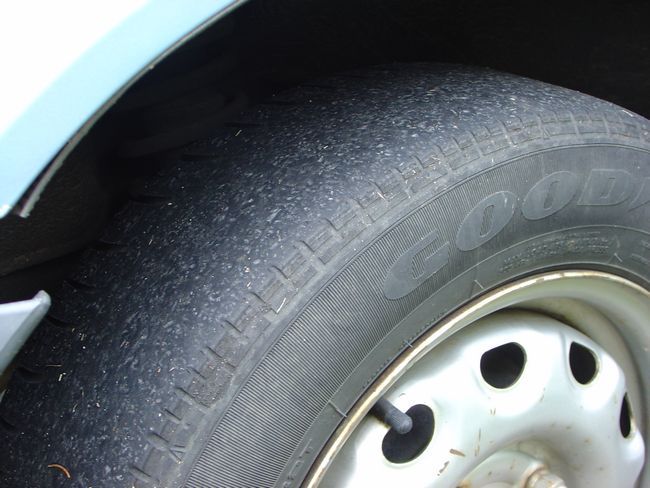
Bald tires might seem like they’re not a big issue, but they can actually produce big problems behind the wheel.
Driving around on treadless tires isn’t just bad for your driving experience. It can also jeopardize everyone’s’ safety, including that of your vehicle and the other motorists’ on the road.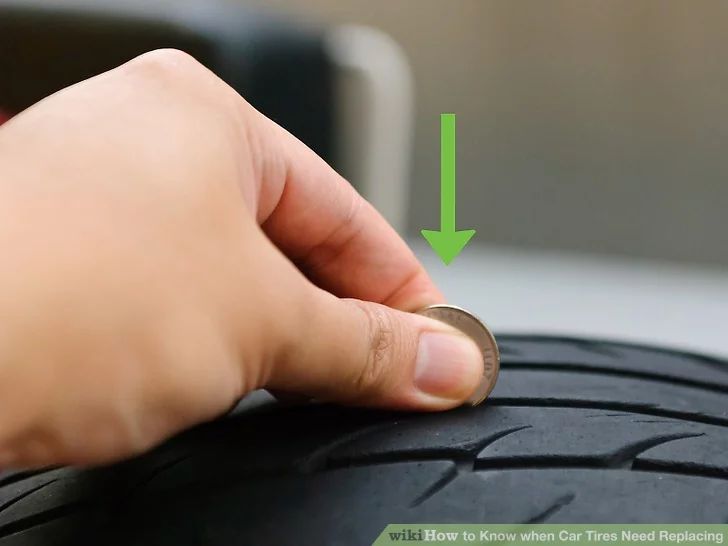 Use these tips to watch for bald tire warning signs, and bring your vehicle to Firestone Complete Auto Care when it’s time for a new set of tires.
Use these tips to watch for bald tire warning signs, and bring your vehicle to Firestone Complete Auto Care when it’s time for a new set of tires.
It’s the tire’s tread that provides the traction you rely on for a safe and smooth drive. As the miles add up, it wears down. Enough wear and you have bald tires.
Bald tires are risky to drive on for two reasons - they’re more susceptible to punctures, and they no longer have adequate tread depth to channel water from under the tread. Which means that, when it rains or snows you may lose traction (and control over your vehicle). For these reasons, bald tires are extremely risky to drive on and should be replaced.
Learn what bald tires are, causes, signs, and the risks associated with driving on them.
Simply put, balding tires are tires that have minimal or no tread left.
A tire's tread wears down with each mile driven, and there are various factors that affect how quickly it wears.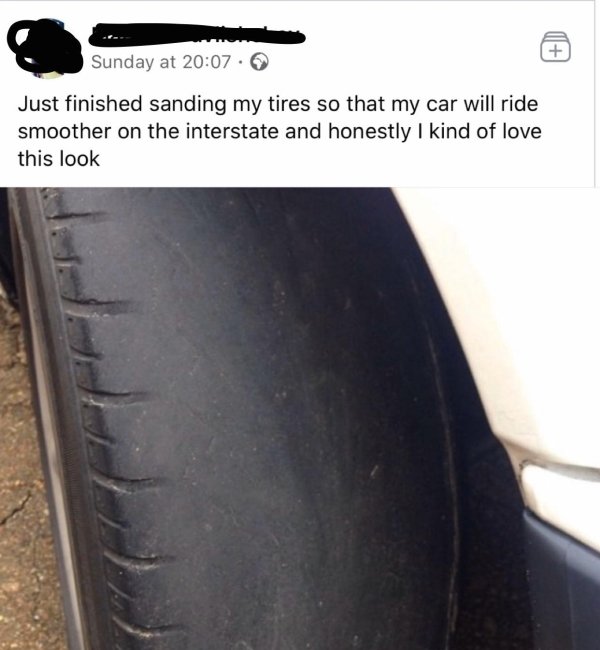 Knowledgeable drivers are proactive in tire care and can prevent the risk of driving on bald tires.
Knowledgeable drivers are proactive in tire care and can prevent the risk of driving on bald tires.
Underinflated and Overloaded Tires
It’s the air inside the tire that carries the weight of the vehicle. A tire without enough air to carry the load is considered “under-inflated”. This is bad because it causes a lot more stress on the tire than it was designed for. A tire carrying a load greater than it was designed for is considered “overloaded”. Just like the under-inflated tire, it’s subject to higher stresses than it was engineered for. In both cases, the result is reduced treadwear, and in extreme situations the tire could fail, which people often refer to as a “blowout”.
Unbalanced and Misaligned Tires
Tires and wheels often have areas that are a bit heavy or light. “Balancing” the tire/wheel assembly involves the use of a machine which tells the technician to add weight in specified places to make the tire/wheel’s weight equal all over. If this isn’t done, the tires may not wear evenly, and the driver may feel a vibration at higher speeds.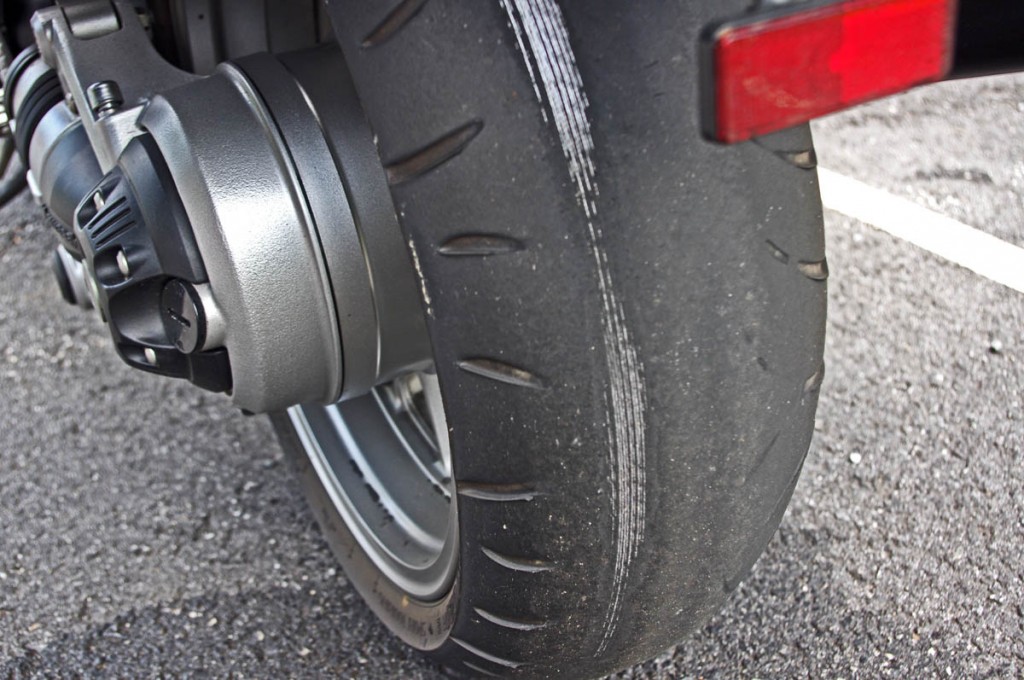
Alignment is important because car makers design the suspension so that tires will roll properly for stable handling, strong traction and good treadwear. When the suspension gets out of specification it’s described as being “out of alignment”. That means the tires are no longer rolling straight; they’re rolling at an angle instead of straight ahead or are tilted from vertical. This often results in increased treadwear, uneven treadwear, and in some cases, the car “pulling” to the left or right.
Neglected Tire & Vehicle Maintenance
Keeping up with the proper maintenance helps a driver to be more aware of when tires are wearing. Neglecting tire maintenance increases the chance of driving on unaligned, underinflated, or unbalanced tires, which, in the end, may result in driving on bald tires.
Recognizing the signs can help drivers know when their tires are going bald and make them aware of when replacement is needed.
Visible Wear Bars
Once the tread is completely worn, tire wear bars (“Treadwear Indicators” in engineering-speak) become more noticeable. They’re about the width of a pencil, and they run across the base of the tread from side to side. They’re most obvious once the tread depth reaches 2/32”.
They’re about the width of a pencil, and they run across the base of the tread from side to side. They’re most obvious once the tread depth reaches 2/32”.
If the tread is worn down to the treadwear indicators the tire is no longer safe or legal for use and must be replaced.
Seeing Low Tread
If it appears the tread is heavily worn, you may check it with this simple and effective tread check at home:
Take a penny and insert its edge into a groove in the tire’s tread so it touches the bottom.
The penny should be placed so that Lincoln’s head is inserted into the tread
If the top of Lincoln’s head is fully visible, the tire’s tread depth is at or below 2/32” (the legal minimum) and the tire should be replaced.
Cracks and Bulges
You should perform an overall visual inspection of your tires periodically, especially if you feel or hear anything unusual from them when driving. Look for cracks or cuts deep enough to expose the steel belts or body cords.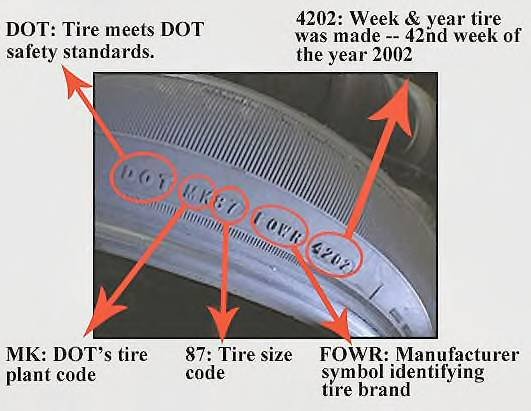 Also check for unusual bulges in the tread or sidewalls - they could be a sign of internal damage. If you notice something that you’re not sure of, don’t hesitate to take it to a professional to have it checked.
Also check for unusual bulges in the tread or sidewalls - they could be a sign of internal damage. If you notice something that you’re not sure of, don’t hesitate to take it to a professional to have it checked.
Driving on bald tires can result in vehicle damage from either tire failure or loss of vehicle control, and either is likely to come with an unwanted repair bill. Prevent unnecessary expenses and risks by replacing bald tires immediately.
Lost Control and Hydroplaning
When it rains, driving on bald tires increases the chances of skidding or hydroplaning. and possible accidents, needed repairs, and hefty insurance costs.
Poor Brakes
When driving, a vehicle’s brakes are trusted to work no matter the speed. But brakes don’t provide traction, tires do. So, when driving on anything other than a perfectly smooth road free of sand, dirt and debris, bald tires compromise your brakes’ ability to stop by providing reduced traction Poor braking efficiency increases the chance of being involved in an accident, plus adds unwanted repair costs.![]()
Punctures
Bald tires are more easily punctured due to the lack of remaining tread. In addition to the possibility of a flat tire, a puncture could cause a blowout, and might even result in a loss of control of your vehicle.
We depend on our tires for our safety when driving; it is vital that they are taken care of properly. Be proactive in replacing tires when they’re considered “bald” - that is, are worn to the 2/32” treadwear indicators. A little attention goes a long way to help you avoid expensive problems, so be sure to check your tires’ tread and keep them properly maintained to help extend their tread life.
Home » Tips
Tips
Author Dmitry Buimistrov Reading 6 min.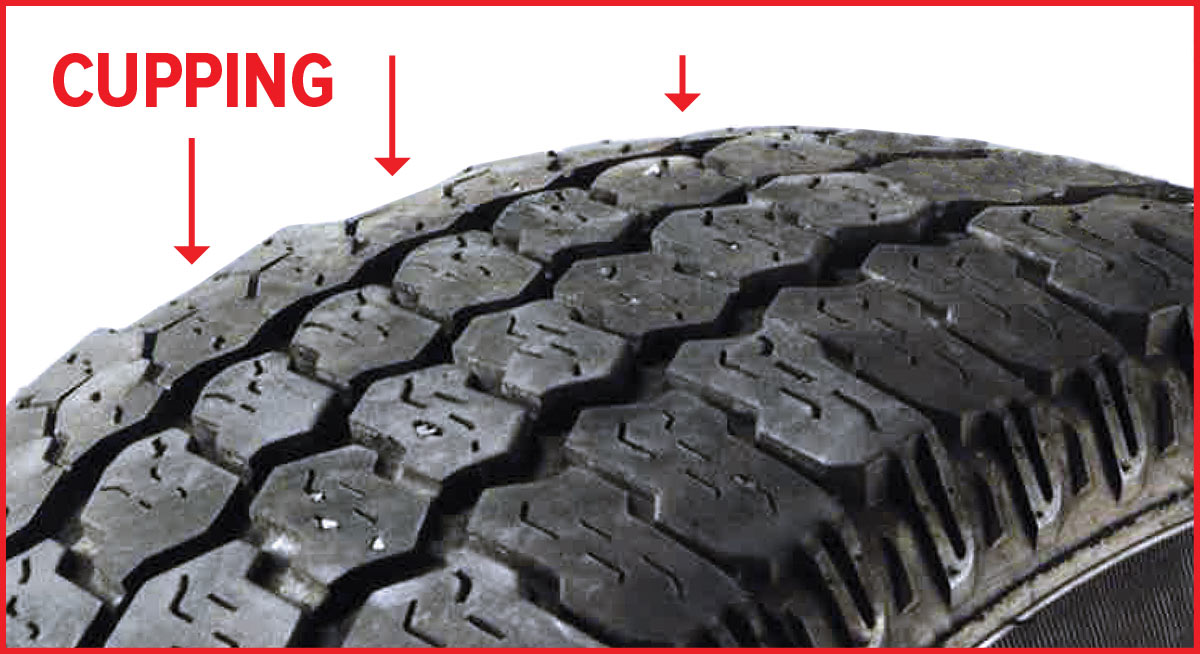 Views 2.7k. Posted by
Views 2.7k. Posted by
Driving on worn tires on the roads of Russia is punishable by a fine. Why? The fact is that the owner of heavily worn tires creates a danger on the road not only for himself, but also for other road users. And the strong wear of the tires obviously will not add comfort to the driver himself.
Worn tires (called "bald" by car owners) reduce the car's handling. The car turns worse, the braking distance increases. All this greatly reduces the quality of driving and increases the risk of an accident.
Many drivers believe that in the summer they can get by with old, “bald” tires. This is not true. According to the requirements of the SDA, summer tires must be changed if the residual tread depth is 1.6 mm, if there are damages (cracks, cuts), and also if individual tread components have peeled off.
Why is this important? Driving in the summer on worn tires leads to a deterioration in dynamic performance on wet pavement.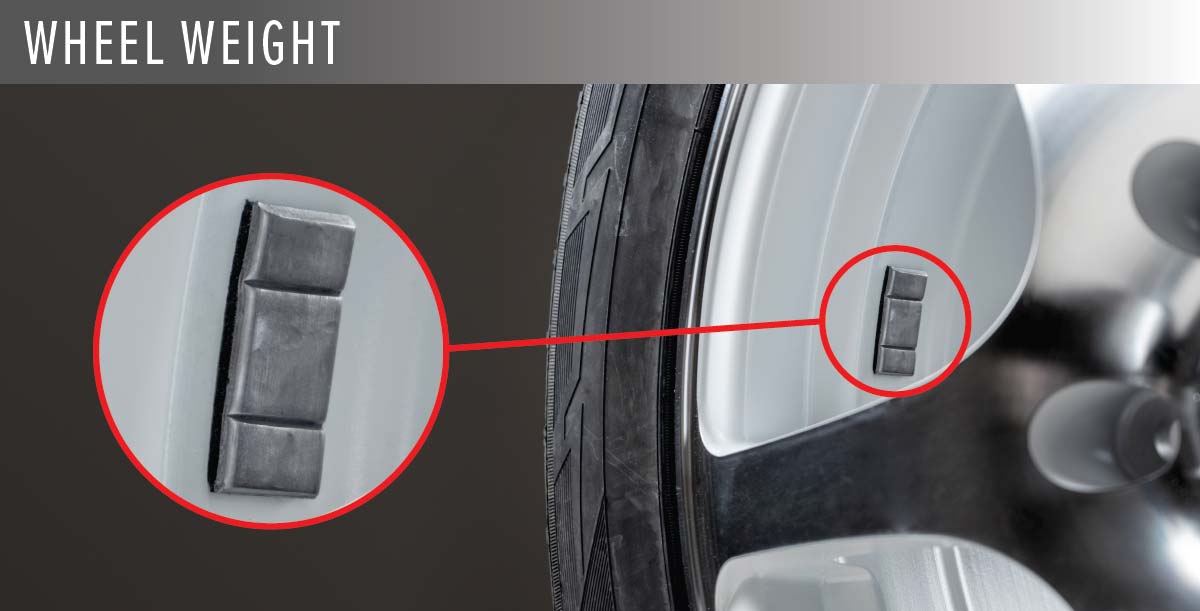 If the tread grooves are not deep enough, water will not be removed from them effectively. The risk of hydroplaning increases, and it begins much earlier than usual.
If the tread grooves are not deep enough, water will not be removed from them effectively. The risk of hydroplaning increases, and it begins much earlier than usual.
Remember that if tires have been driven over 20,000 km, they must be constantly inspected by measuring the tread depth. Your safety depends on it!
Wear occurs for various reasons.
 In a front wheel drive car, the wear will be the same across the entire tire.
In a front wheel drive car, the wear will be the same across the entire tire. 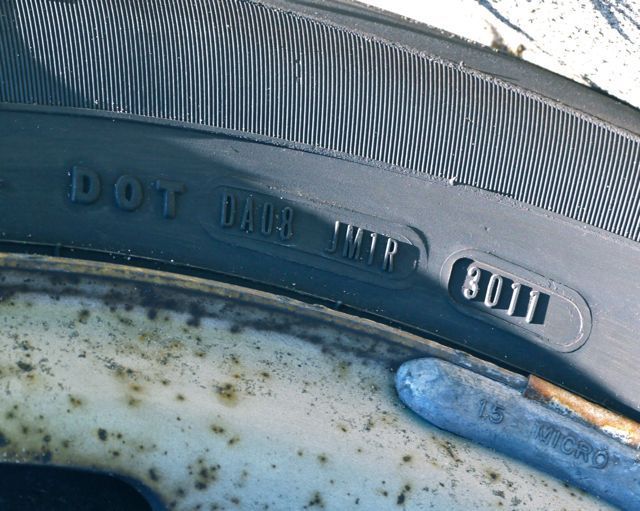 If the pressure is too low, the tire will wear faster at the edges. Too high - on the contrary, in the middle.
If the pressure is too low, the tire will wear faster at the edges. Too high - on the contrary, in the middle. 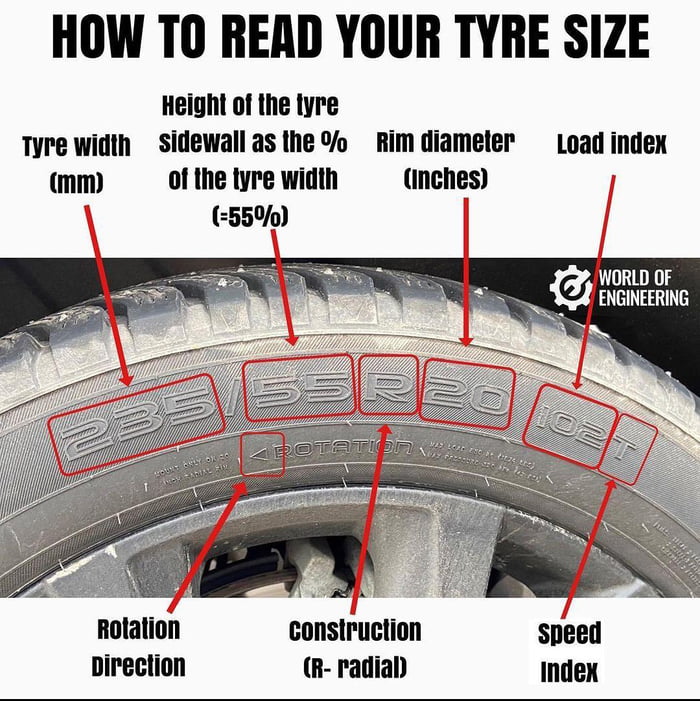
The outer rubber layer of the tire has a pattern, and it is different on winter and summer models. In the summer version, the pattern is used to quickly drain water, in winter - to improve grip on slippery surfaces.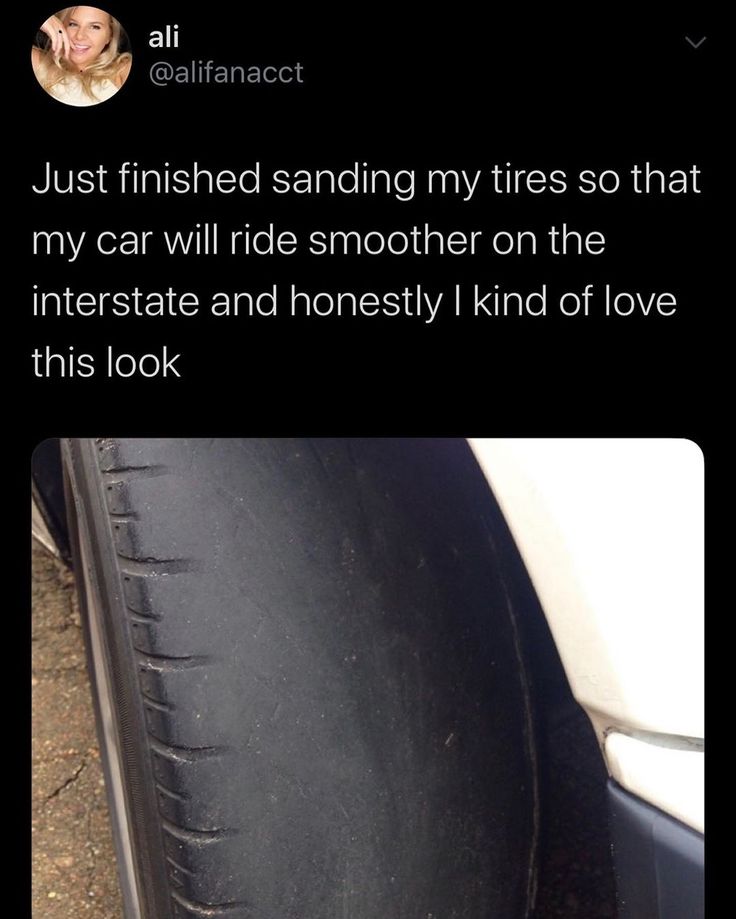 The main parameter of the pattern is the height and depth of its constituent grooves. In modern tires, the depth starts at 5 mm. In summer versions, it is about 7 mm, in winter - from 8 to 10. In off-road tires, the figure can reach 20 mm.
The main parameter of the pattern is the height and depth of its constituent grooves. In modern tires, the depth starts at 5 mm. In summer versions, it is about 7 mm, in winter - from 8 to 10. In off-road tires, the figure can reach 20 mm.
It is the depth of the grooves that suffers from tire wear and can be used to determine the condition of the rubber. If the tread height falls below 1.6 mm in summer, hydroplaning resistance will be greatly reduced. In winter tires, the minimum allowable indicator is 4 mm. It is necessary to periodically measure this parameter and change the tire when the limit values \u200b\u200bare reached.
 Next to the block for determining wear is often the manufacturer's logo, a triangle mark or the letters TWI. Michelin tires use the image of Bibendum, a man made from tires.
Next to the block for determining wear is often the manufacturer's logo, a triangle mark or the letters TWI. Michelin tires use the image of Bibendum, a man made from tires.  If the word "penny" disappeared, then everything is in order with the tire. A winter tire must be changed if the depth is only enough to hide the ornament. Summer - if only the rim is hidden.
If the word "penny" disappeared, then everything is in order with the tire. A winter tire must be changed if the depth is only enough to hide the ornament. Summer - if only the rim is hidden. Remember that driving on "bald" tires is life threatening. When using worn tires, even the most ordinary turn turns into a serious test of the speed of reflexes. Remember to measure the depth of the tread grooves and change tires in a timely manner so that a sudden accident due to bald tires does not lead to more expensive repairs.
Hello! My name is Dmitry, I am a journalist by education. I specialize in automotive topics - I started my career in an online store of automotive components, and I myself am a car enthusiast.
Rate this article:
(5 votes, average: 3 out of 5)
Share with friends!
June 16
0
853
All tires will eventually wear out.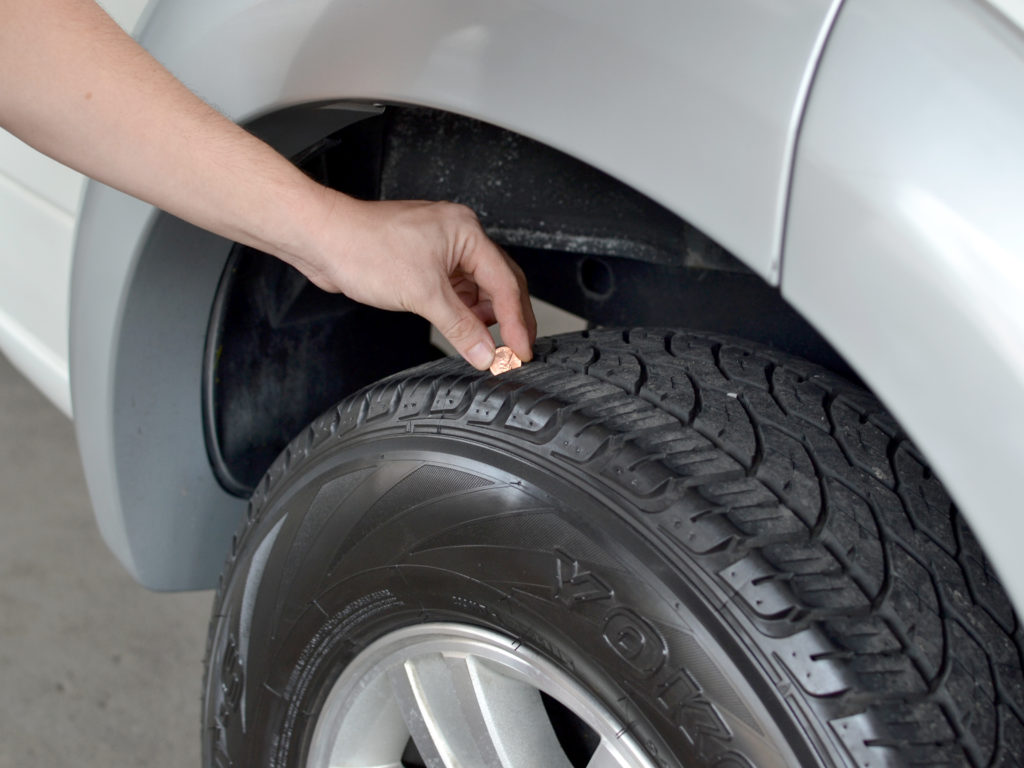 This may be normal, regular wear and tear when they have worked their time. And there may be premature wear, which occurs with careless driving, braking, or when passing sharp turns. Often premature tire wear can be due to a manufacturer defect. It is very important to detect wear in a timely manner and take appropriate measures.
This may be normal, regular wear and tear when they have worked their time. And there may be premature wear, which occurs with careless driving, braking, or when passing sharp turns. Often premature tire wear can be due to a manufacturer defect. It is very important to detect wear in a timely manner and take appropriate measures.
Any car owner can control tread wear in several reliable and convenient ways:
Some tires are equipped with a number system. They reflect the depth of the rubber, and are erased over time. You can always visually determine the degree of wear.
Most often, car owners use a wear indicator. On the tire in the longitudinal grooves there is a tread block up to 2 mm thick. If the tread is at the same level as the indicator, then such a tire must be replaced.
The most accurate readings of tread wear can only be obtained using a special tool.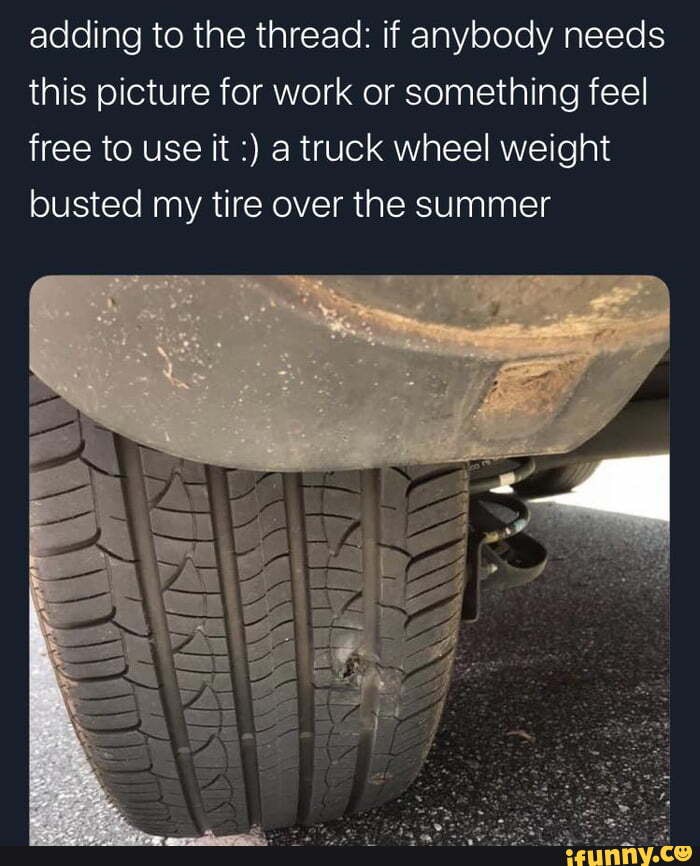 This inexpensive device allows you to take measurements in various places on the tire.
This inexpensive device allows you to take measurements in various places on the tire.
If we compare tires in terms of wear, we can distinguish bald tires with a tread of less than 1.6 mm and semi-worn tires with a tread of less than 4 mm. New tires have a tread depth of 8-10 mm.
On dry pavement, a half-worn tire has little to no effect on handling. Some car owners note that in some cases, the car's handling improves. Fuel consumption is also slightly reduced by reducing rolling resistance due to the low tread.
But this does not in the least save the driver from danger when driving at high speed. When braking hard or cornering at speed, a tire rupture may occur.
On wet pavement, bald tires will never compete with new tires. A worn tread significantly increases the likelihood of hydroplaning even at lower speeds. Due to the worn tread, water is not completely removed from the contact patch. On a snowy road, there is an increase in braking distance and poor vehicle handling.
The use of worn rubber primarily affects the following indicators:
The operation of bald tires makes the car almost unpredictable in critical situations. Worn tires have a lower coefficient of grip on dry or wet roads, which leads to a significant increase in the braking distance. In moments of emergency braking, the car becomes almost uncontrollable even on dry pavement.
Even with light loads on dry roads, bald tires can burst. With the deterioration of weather conditions, unforeseen accidents increase many times over. Often, car owners install tires with worn tread on non-driving axles. But this is the wrong decision. The car will also be unpredictable in control. New and worn tires have different levels of grip and behave differently when maneuvering.
Timely repair of tires or their replacement will help to avoid all troubles.